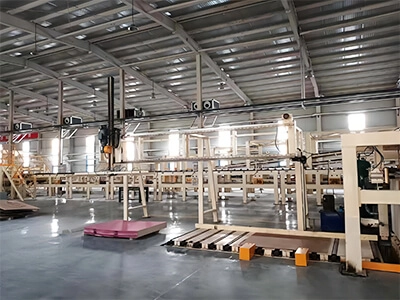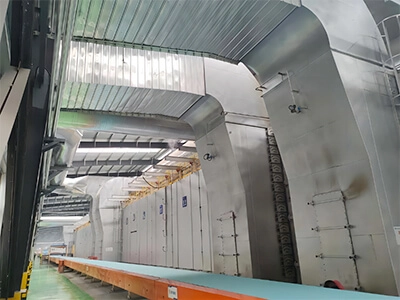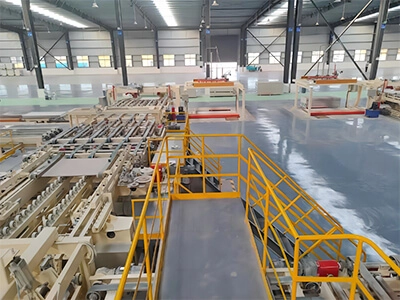
Gypsum Board Machine Factory

Paper Faced Gypsum Board Machinery

Produce Gypsum Board

Paper Faced Gypsum Board Production Line
Wall Plastering Machine process flow is Crushing, grinding, calcination
Wall Plastering Machine can be basically divided into three stages: crushing, grinding, and calcination. During the crushing stage of the Plaster powder production process, the size and specifications of the extracted Plaster ore vary. According to the actual situation, suitable crushing equipment is selected for preliminary crushing treatment, and particles with a particle size of no more than 35mm are crushed. 1. Jaw crusher, feed particle size ≤ 1200mm, discharge
Process: Introduction to Wall Plastering Machine Process
1: The crusher crushes large-sized Plaster ore into small particles smaller than 25mm, which are stored and transported into a mill for grinding. The powder selection machine then sends the Plaster raw powder that reaches the required fineness of the product to a fluidized bed furnace for calcination, and the rest is returned to the mill for further grinding until it is qualified. The qualified Plaster powder after calcination is sent to the clinker warehouse for storage or to the product workshop for use.
2. Process flow: Ebo lifting silo, measuring scale, rotary kiln, hammer breaking, measuring belt, natural Plaster production line
2、 Chemical Industry
1. Produce sulfuric acid, with the addition of light cement.
2. Produce ammonium sulfate and produce light calcium carbonate.
3、 Agriculture
3. Improve soil, regulate acidity and alkalinity, suitable for improving saline alkali soil, red soil, and other soils.
4. Used as a calcium and sulfur compound mineral fertilizer in the cultivation of edible mushrooms, to regulate the acidity and alkalinity of the culture medium.
5. Used as a composite mineral feed additive in poultry and livestock feed.
2、 Chemical Industry
1. Produce sulfuric acid, with the addition of light cement.
2. Produce ammonium sulfate and produce light calcium carbonate.
3. Agriculture
3. Improve soil, regulate acidity and alkalinity, suitable for improving saline alkali soil, red soil, and other soils.
4. Used as a calcium and sulfur compound mineral fertilizer in the cultivation of edible mushrooms, to regulate the acidity and alkalinity of the culture medium.
5. Used as a composite mineral feed additive in poultry and livestock feed.
Submitted successfully
We will contact you as soon as possible
Submitted successfully
We will contact you as soon as possible
Submitted successfully
We will contact you as soon as possible